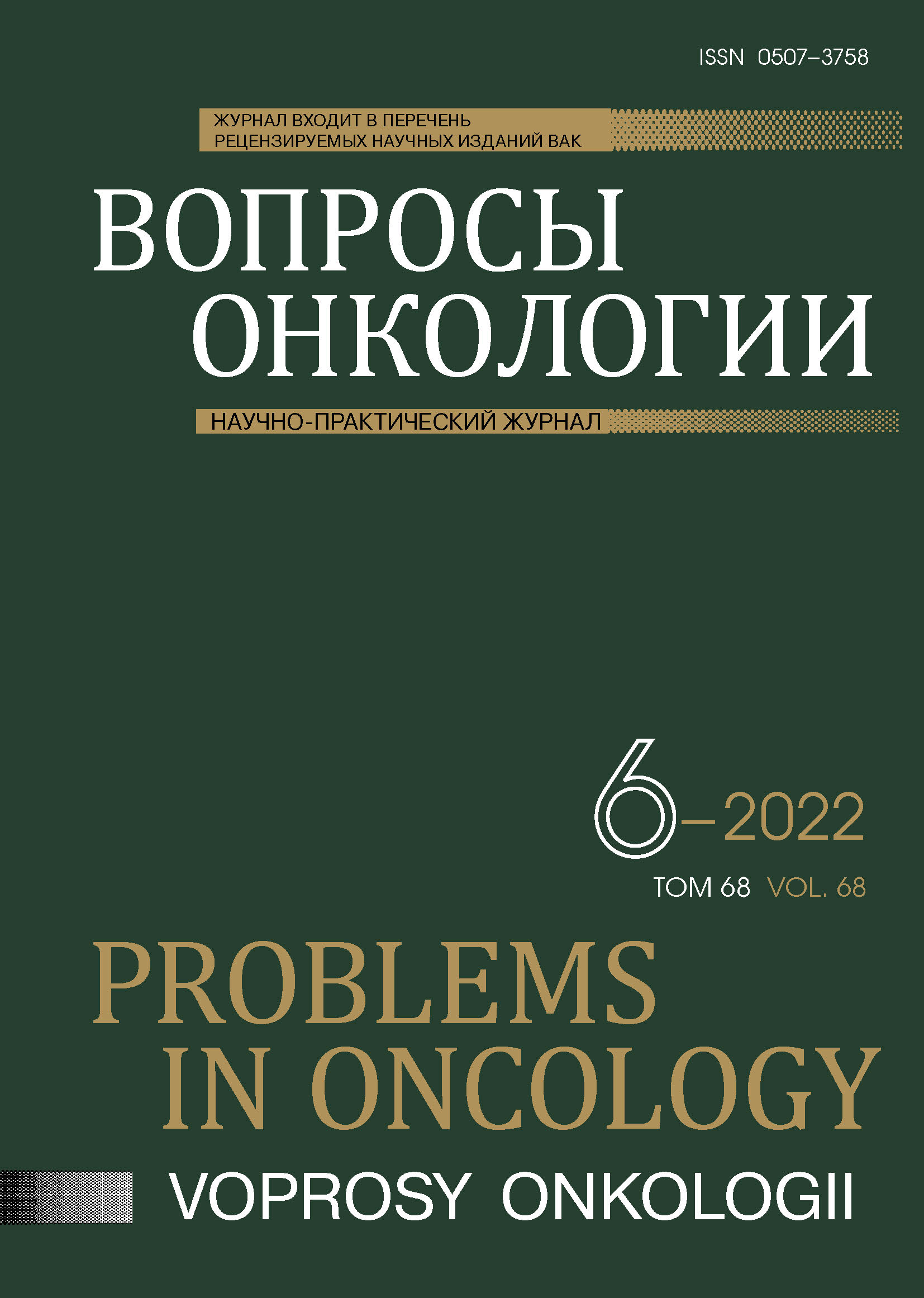Abstract
Purpose. Testing of the method of application of the new home-produced medical device, i. e. heterogenic implantable gel (hereinafter referred to as ‘gel’) on the basis of «cross-linked» collagen of animal origin as a biodegradable spacer (BDS), which allows to reduce the radiation dose on the anterior wall of the rectum during external beam radiation therapy for prostate cancer (PCa).
Materials and methods. A study on developing and testing the first domestic BDS for optimization of radiation treatment for a number of solid neoplasms is being conducted since April 2019 to the present day. An analysis of the use of a number of biodegradable compositions selected jn the basis of the described world experience has been carried out. The study included 37 patients who had taken various biopolymers as spacers: carboxymethylcellulosis was taken by 7 people, hyaluronic acid ― by 10, and collagen ― by 25 people. In the framework of the assigned mission, the compositions were administered by the transperineal method before the start of irradiation.
Results. The majority of the biopolymers applied demonstrated unsatisfactory performance as BDS. Optimal results were obtained when using the domestic animal collagen-based biopolymer «SpheroGEL®» performed by «LONG» (15 out of 25 patients), which served as the basis for the development of a special formulation ― «SpheroSPACER®». The introduction of this variant of the gel made it possible to achieve a stable distance between the prostate and the rectum equal to or greater than 1 cm in most of the cases observed. In average, its value comprised 12.6±2.1 mm. The created space between the prostate gland and the anterior wall of the rectum retained its stability after reaching the primary final volume for at least 14 days. There were no cases of significant adverse events or complications at the moment of implantation and the subsequent period of observation over / follow-up of patients.
Conclusions. Application of the heterogeneous composition (SpheroSPACER®) consisting of microparticles of «cross-linked» collagen of animal origin placed in a gel makes it possible to safely achieve the required spatiotemporal interrelations between the prostate gland and the anterior wall of the rectum.
References
Новиков Р.В., Новиков С.Н. Технологии снижения лучевой токсичности у больных раком предстательной железы: спейсеры ― простое и эффективное решение // Онкоурология. 2021;17(3):64–77. doi:org/10.17650/1726-9776-2021-17-3-64-77 [Novikov RV, Novikov SN. Technologies to reduce radiation toxicity in prostate cancer patients: spacers ― a simple and effective solution // Onkourologiya. 2021;17(3):64–77 (In Russ.)]. doi:org/10.17650/1726-9776-2021-17-3-64-77
Basu S, Manir KS, Basu A, Ghosh K. Rectal separation using hydroxypropyl methylcellulose in intracavitary brachytherapy of cervical cancer: an innovative approach // J Contemp Brachytherapy. 2016;8(5):399–403. doi:10.5114/jcb.2016.62951
Müller AC, Mischinger J, Klotz T, Gagel B et al. Interdisciplinary consensus statement on indication and application of a hydrogel spacer for prostate radiotherapy based on experience in more than 250 patients // Radiol Oncol. 2016;50 (3):329–336. doi:10.1515/raon-2016-0036
Hatiboglu G, Pinkawa M, Vallée JP et al. Application technique: placement of a prostate-rectum spacer in men undergoing prostate radiation therapy // BJU Int. 2012;110 (11):E647–52. doi:10.1111/j.1464-410X.2012.11373.x
Harvey M, Ong WL, Chao M et al. Comprehensive review of the use of hydrogel spacers prior to radiation therapy for prostate cancer // BJU Int. 2022. doi:10.1111/bju.15821
Aminsharifi A, Kotamarti S, Silver D, Schulman A. Major complications and adverse events related to the injection of the SpaceOAR hydrogel system before radiotherapy for prostate cancer: review of the manufacturer and user facility device experience database // J Endourol. 2019;33(10):868–871. doi:10.1089/end.2019.0431
Prada PJ, Fernández J, Martinez AA et al. Transperineal injection of hyaluronic acid in anterior perirectal fat to decrease rectal toxicity from radiation delivered with intensity modulated brachytherapy or EBRT for prostate cancer patients // Int J Radiat Oncol Biol Phys. 2007;69(1):95–102. doi:10.1016/j.ijrobp.2007.02.034
Noyes WR, Hosford CC, Schultz SE. Human collagen injections to reduce rectal dose during radiotherapy // Int J Radiat Oncol Biol Phys. 2012;82(5):1918–22. doi:10.1016/j.ijrobp.2011.02.034

This work is licensed under a Creative Commons Attribution-NonCommercial-NoDerivatives 4.0 International License.
© АННМО «Вопросы онкологии», Copyright (c) 2022
